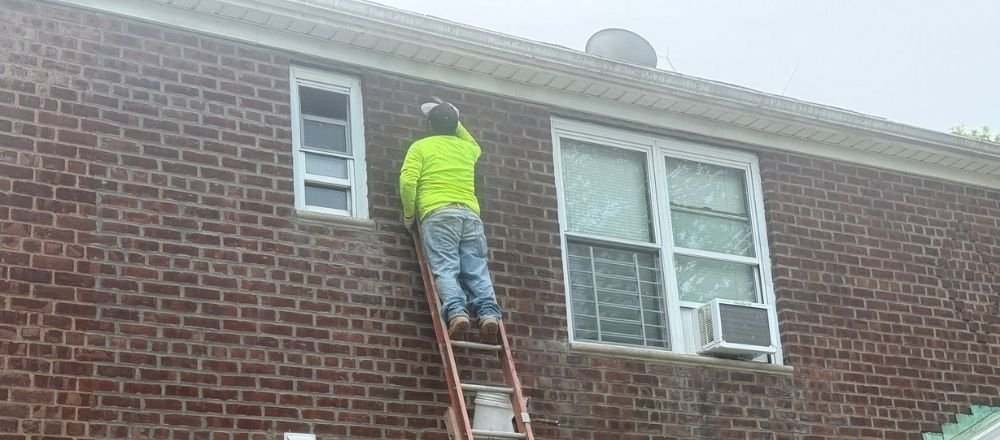


If you’ve looked into restoring brickwork, you’ve probably seen the terms brick pointing and repointing. People toss them around like they’re the same thing, but they’re not and mixing them up could cost you time and money. So, how do you know whether your wall needs pointing for a clean finish or repointing to fix deeper problems? The difference matters, especially if you’re hiring a contractor or trying to protect your property’s structure. This blog unpacks what each term really means, why it matters, and how to figure out which service your building needs. Let’s clear it up.
Brick pointing is all about putting fresh mortar into the visible joints between bricks when a wall is first built. Think of it as the final touch that seals and shapes those mortar lines, giving the brickwork its sharp, finished look. But here’s the thing, it’s not just about appearances. Good brick pointing protects your walls from water and weather damage. Skilled masons press and smooth the mortar to create tight, even joints that add both strength and style. In short, brick pointing is about starting on the right foot rather than having to fix things later.
Brick repointing is more of a rescue mission. Over time, mortar wears away, thanks to rain, sun, wind, and plain old age. Gaps and cracks start showing up, and that’s when water creeps in and bricks begin to weaken. Repointing is the process of carefully removing the old, damaged mortar and replacing it with new mortar that matches the original in look and strength. It’s precise work, and when done right, it restores the wall’s appearance and keeps the structure sound. Unlike pointing, which starts fresh, repointing gives tired brickwork a second chance to stand strong.
Brick pointing and repointing might both involve working mortar into brick joints, but they’re two very different jobs with different purposes. Figuring out which one you actually need can save you from wasting money or making the wrong call on repairs. So let’s break down what really sets them apart.
Brick pointing happens during new construction. It creates clean, strong mortar joints that protect and define the wall from day one. On the other hand, repointing is repair work, replacing worn-out mortar to keep an older wall solid and safe.
Pointing is part of building a new wall. Repointing comes years, sometimes decades, later once mortar has cracked, crumbled, or fallen out from exposure and time.
Pointing involves finishing fresh mortar joints to the right depth and profile. Repointing is more demanding. It means carefully removing failing mortar and packing in new material. The risk of damaging the surrounding bricks makes repointing a more delicate and time-intensive process.
Repointing typically costs more per square foot than pointing because it involves removing old mortar and matching the new mix precisely to the existing work. Pointing, done during construction, is simpler and faster.
Both affect how a wall looks, but differently. Brick pointing sets the initial look with sharp lines, smooth finishes, and even color. Repointing must blend invisibly into the original wall so repairs don’t stand out. Poor repointing leaves obvious patches that clash with the rest of the brickwork.
| Factor | Brick Pointing | Brick Repointing |
|---|---|---|
| Purpose | Applied during new construction to create neat, protective mortar joints | Repairs and replaces old, damaged mortar in existing walls |
| Timing | Done when a wall is first built | Done years or decades later after mortar deterioration |
| Scope of Work | Finishing fresh mortar joints to a precise shape and depth | Removing deteriorated mortar and refilling joints carefully |
| Cost | Generally has a lower cost per square foot because it’s part of new construction | Higher cost due to labor-intensive removal and matching process |
| Impact on Appearance | Sets the initial look of the brickwork with uniform color and crisp lines | Must blend seamlessly with existing work to avoid visible patches |
Brick pointing and repointing might sound similar, but they play completely different roles in a building’s lifespan. One sets the stage for a strong, clean wall from the beginning. The other steps are taken when time and weather have taken their toll, giving aging brickwork a second chance. Knowing which you need isn’t just trivia. It protects your property, saves money, and preserves your home or building’s character. If you’re facing cracked mortar or planning new construction, choose the right approach for your brickwork.